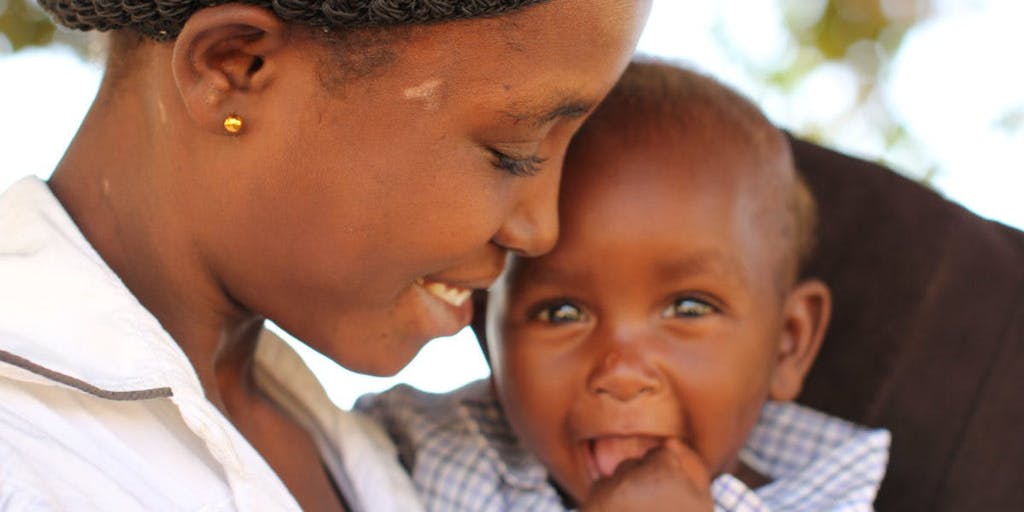 World Breastfeeding Week takes place each year during the first week of August. The World Alliance for Breastfeeding Action (WABA), a global network of individuals and organizations committed to protecting, promoting, and supporting breastfeeding worldwide established this awareness week.
World Breastfeeding Week takes place each year during the first week of August. The World Alliance for Breastfeeding Action (WABA), a global network of individuals and organizations committed to protecting, promoting, and supporting breastfeeding worldwide established this awareness week.
Breastfeeding is a simple but vital practice. It can make a lifelong difference for a child, benefits the health of a mother, and has the potential to positively affect the development of a country. However, there are many common misconceptions about breastfeeding. Some of these breastfeeding myths create roadblocks to ensuring mothers, children, and communities have the opportunity to reap the incredible benefits of this practice. As a result, one of the key tenets of Food for the Hungry’s work in health is providing knowledge and resources to promote breastfeeding in the communities where we work. Today on the blog, we thought we would share some of the most common breastfeeding myths and misconceptions we come across–debunked!
Myth #1: It is common knowledge that exclusive breastfeeding is the most ideal source of nutrition for babies
 It is understandable that some believe the benefits of exclusive breastfeeding are widely known and practiced. However, that is not necessarily the case! According to UNICEF, in 2018 only 41% of the world’s mothers were implementing this practice.
It is understandable that some believe the benefits of exclusive breastfeeding are widely known and practiced. However, that is not necessarily the case! According to UNICEF, in 2018 only 41% of the world’s mothers were implementing this practice.
There are several attributing factors as to why that percentage is low, one of which, has to do with awareness. Many mothers simply do not know the incredible benefits of breastfeeding. FH uses our Care Group model to bring awareness and support to mothers. A Care Group is a small group of people (in this instance, mothers or women) who come together to learn and live in community. The group is lead by a volunteer leader or Mother Leader, who teaches the group about a variety of topics including prenatal care, breastfeeding, nutrition and more! Mothers are helping other mothers and the outcome is creating healthier children and families.
Myth #2: Every woman can breastfeed
Anyone who has fallen prey to a blanket statement knows how painful it can be. The statement, “every woman can breastfeed” is false. While most women have the ability to breastfeed, a small percentage of women are unable to nurse. Behind that small percentage are real women facing real challenges. Some of the obstacles can include when a mother’s milk doesn’t come in, or she stops producing enough. It could be she is getting continuous infections and it is just too painful to continue. Or a completely outside factor is her work does not provide enough time or a place to pump. Those are just a few of the many reasons why a mother cannot breastfeed. Exclusive breastfeeding for the first six months of a baby’s life is the most ideal situation, but it’s not always possible. It is important to approach this topic with sensitivity and care.
Myth #3: Breastfeeding only benefits the baby
Exclusive breastfeeding for the first 6 months of a child’s life creates a sturdy foundation of development and growth. It helps establish babies’ immune systems through the antibodies in breast milk. According to the World Health Organization,
“There is overwhelming evidence that breastfeeding protects against the two leading causes of death in children under 5 years—pneumonia and diarrhea. Nearly half of all diarrhea episodes and one-third of all respiratory infections would be prevented with breastfeeding.”
Studies show that breastfeeding reduces the likelihood of obesity later in life and is associated with higher performance on intelligence tests as well. We know breastfeeding is good for babies, but did you also know it is good for mothers too? Breastfeeding reduces the risks of breast and ovarian cancer, type II diabetes, and postpartum depression. Breastfeeding is not only ideal for baby but mom, too!
Myth #4: Nursing is easy; all it takes is a mother’s natural instinct
 Breastfeeding is not an innate skill that comes with being a woman and a mother. It is a learned skill and often presents challenges at the beginning. Medical professionals called lactation consultants help mothers and babies overcome obstacles associated with nursing. Mothers need and deserve support and encouragement with a new baby for many reasons. Breastfeeding is no exception. Babies and mothers need adequate time and space to experience success with breastfeeding.
Breastfeeding is not an innate skill that comes with being a woman and a mother. It is a learned skill and often presents challenges at the beginning. Medical professionals called lactation consultants help mothers and babies overcome obstacles associated with nursing. Mothers need and deserve support and encouragement with a new baby for many reasons. Breastfeeding is no exception. Babies and mothers need adequate time and space to experience success with breastfeeding.
Myth #5: Breastfeeding is a celebrated practice by all
There are many reasons as to why nursing is the most ideal situation for both mom and baby. However, all around the world in high-income and low-income countries alike, mothers come up against difficulties. These unfortunate difficulties stem from sources from negative societal attitudes about the topic to a lack of knowledge, time, and coaching for mothers to be able to exclusively breastfeed. Each one of us can make a difference in breaking down the negative or apathetic ideas surrounding this practice.
Learn more about Food for the Hungry’s work specifically surrounding pregnant and lactating women here. You can also learn more about World Breastfeeding Week and how you can be more involved in your own community by visiting http://waba.org.my/.
Continue Reading:
World Breastfeeding Week: How Breastfeeding Contributes to Ending Poverty


